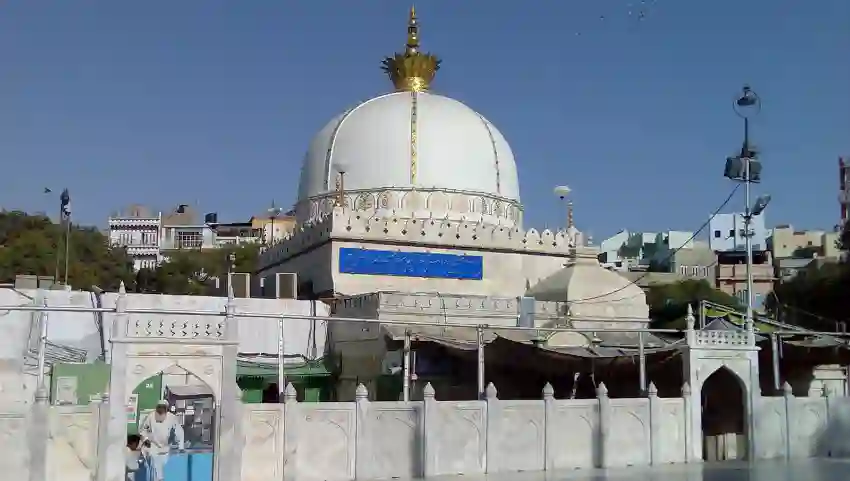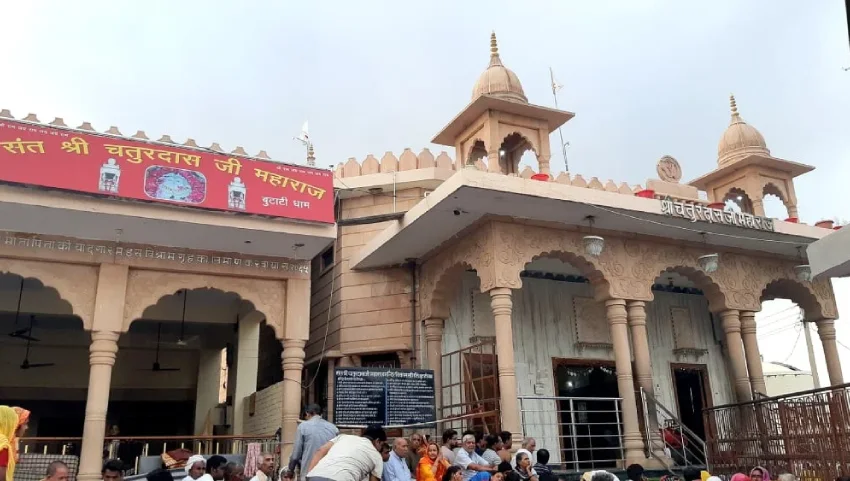
Ajmer Dargah Sharif in Rajasthan
Believed to be a place where the person who offers prayers to the deity with a pure heart at Dargah Sharif gets fulfilled by his blessings. Ajmer Dargah Sharif is a popular holy pilgrimage site of Muslims who flock here in abundance from across the country, especially on Rajasthan tour packages. The pious Persian Sufi Saint Khwaja Moinuddin Chishti is well known for its earthly preaching and is enshrined here. Muslim devotees believe that the saint Moinuddin Chishti was Muhammad’s direct descendant. At his request, the saint visited India and reached Ajmer in 1192 via Lahore and stayed there till his death in 1236 AD.
Dargah Sharif in Ajmer was built in 1532 as a place of Sufism in India. Its fine architecture highlights the Indo-Islamic style. The white marble dome is emphasized with a lotus and a crown of gold is on the Sufi saint Khwaja Moinuddin Chishti. He is reverently known as Khwaja Ghareeb Nawaz’s Shrine. The grave of Chishti rests within the dargah itself and is considered a prominent attraction among tourists. Along with it, there are several mosques inside the dargah complex, built by Akbar and Shah Jahan, who made it a point to explore in the Ajmer Sightseeing tour.
History of Sufi Saint Khwaja Moinuddin Chishti
The Sufi saint’s actual name was Sarkar Khwaja Moin-ud-din Hasan Chishti urf Khwaja Ghareeb Nawaz. He came to India in 1192 from Persia and first reached Ajmer. He was a good preacher, religious scholar, and mystic from the Sistan Province of Iran. The saint was highly influenced by the works of Sunni scholar Khwaja Abdullah Ansari and it was believed that his work on the lives of the early Islamic saints reshaped Chishti’s ideologies and outlook on the world. With his outstanding works during the Mughal era, Moinuddin Chishti was regarded as a great saint and a captivating preacher. After his death in 1236, the Ajmer Dargah of Khwaja Moinuddin Chishti became a prominent revered site for pilgrims and tourists alike.
Architecture of Dargah Sharif in Ajmer
An enormous complex of Dargah in Ajmer features several magnificent architectures and has 8 entry gates. Presently, only 3 gates are operational, of which the principal gate is called the Nizam Gate. This yellow gate was built by the 7th Nizam Mir Osman Ali Khan of Hyderabad in 1911 AD. Another famous gate of dargah sharif is Shahjahani gate, while the other ones are Madar Gate, Delhi Gate, Bhisti Gate, etc.
In the complex, there are 8 tombs of other family members beside the main tomb of Moinuddin Chishti. The major tomb was erected during Humayun’s period. The famous tomb includes Bibi Hafiza and Nizam Sikka, the water carrier who saved the life of Humayun from drowning in the Ganges after his defeat by Shershah Suri. Akbar also paid his visit to the tomb and donated a chandelier – Ahaat-e-Noor. Close to the Nizam is a drum house where the drum used to be played to welcome.
Some prominent structures inside the complex include Buland Darwaza, Jama Masjid, Dargah Shrine, and Mehfil Kabana where you will also notice the massive cauldrons in the courtyard. The grave of the Sufi saint lies in the domed, where you can enter through Buland Darwaza. One can buy offerings from outside and pay reverence to the saint.
Best time to visit Ajmer Sharif
An ideal time to visit the dargah sharif is in winter from October to April, as the weather is pleasant and awe-inspiring. In the months of May & June, the climate turns out to be very hot and if you wish, you can also visit the shrine during the Urs festival.
Winter timings: 5 am to 9 pm
Summer timings: 4 am to 10 pm
Urs Festival Ajmer
During the first six days of Rajab (the seventh month of the Islamic calendar), Urs Festival takes place in Ajmer Dargah Sharif. This festival commemorates Khwaja Moinuddin Chishti on his death anniversary. During this time of the year, the saint’s mortal remains lie buried and is the site of the largest Muslim fair in India. Devotees offer chadar and neema to the saint and seek his blessings. Mehfils and Qawwalis are held in masses for the eternal peace of mankind. An interesting ritual of this festival is the looting of kheer prasadi (milk pudding) which is cooked in two large cauldrons called Degs and distributed to the devotees as tabarruk.
Nearby attractions
-
Prithviraj Samaraj
-
Taragarh Fort
-
Ana Sagar Lake
-
Adhai Din ka Jhopda
-
Nareli Jain Temple
-
Taragarh
-
Daulatbag
Conclusion
No matter when you are traveling to Jaipur Ajmer Tour Package, you are always recommended to pay homage to Dargah Sharif. Nothing can beat a peaceful evening, watching the dervishes swirl to enchanting Sufi music. This can all be best experienced in Dargah Sharif Ajmer.


































